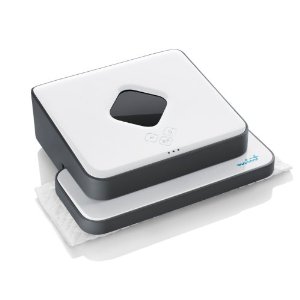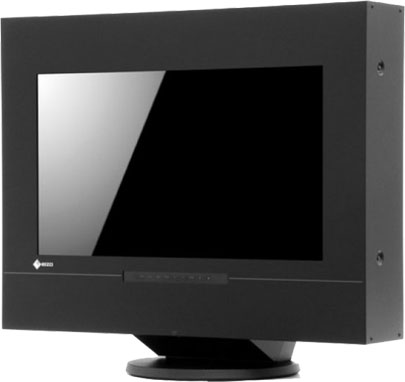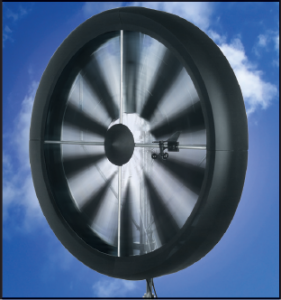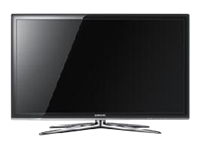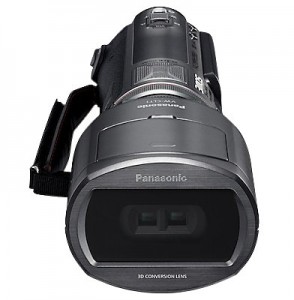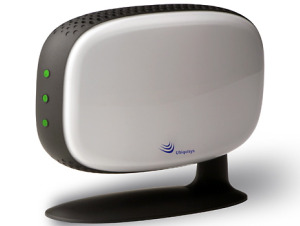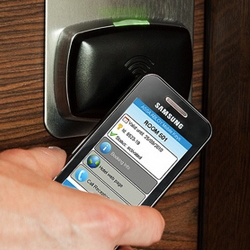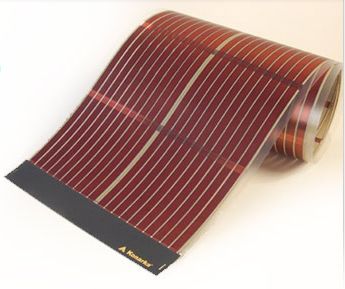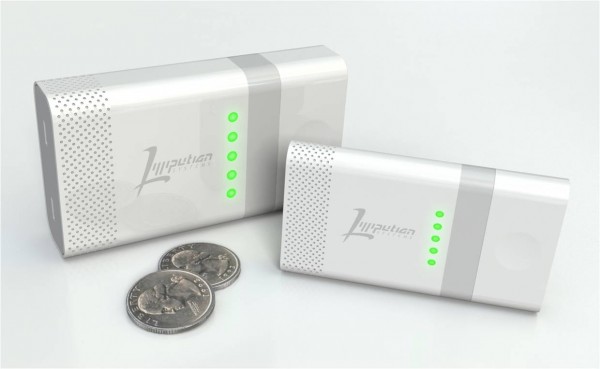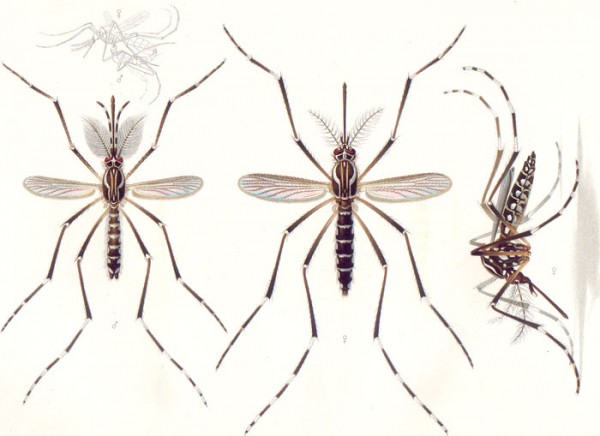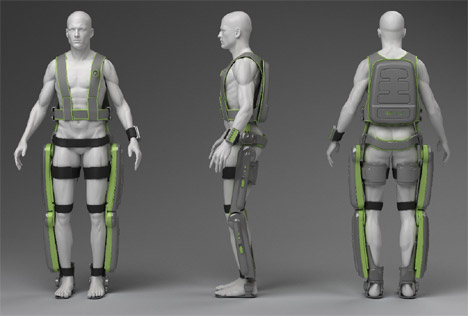There is nano in your future. Between nanotechnology and 3D, robots and mobile, cars and green technology, 2011 will be an exciting year for new products and technologies. Here are the 25 most promising products for 2011:
25. The Mint
The Roomba robotic housecleaner seems like a cool concept, until you see it miss spots and crash into walls. The Mint, a new robotic cleaner, ups the ante on the Roomba. It has a built-in navigation system that uses an infrared laser as a satellite-like reference point while mapping out a room, making for a more thorough, less epileptic cleaning job. All you have to do is stick a wet or dry Swiffer pad on your Mint, and let it do its job well. Take that, Roomba.
24. 3D Computer Monitor
The 3D revolution is on, and don’t think that excludes the Internet. The DuraVision FDF2301-3D, by Japanese monitor maker EIZO, is 23 inches of HD 3D without glasses. You can choose from four different kinds of 3D settings on the monitor. The clincher: each monitor will probably cost somewhere upward of $25,000.
23. Infinity I-Kitchen
Admit it. All that’s missing from your fridge is a touchscreen UI, one that lets you control its internal temperatures, make lists, find recipes, look up contacts, and basically contain all those other functions that used to live on and around your fridge door. Enlightenment Foundation Libraries’ Infinity I-Kitchen scratches this itch by making fridges more high-tech. The open-source touchscreen computer lives inside your fridge, and, as a Linux-based app, is open for modification. The screen, though, will only live in an Electrolux fridge–take that as you will.
22. The Cow Manure Generator

Image: Foxypar4/Flickr
Methane is one nasty greenhouse gas. It’s over 20 times more potent to the atmosphere than carbon dioxide. But Chinese innovators have figured out how to mitigate atmospheric damage while generating electricity with their new generator, which converts the methane gas from fermented cow manure into electricity. The power plant, which runs on GE gas-powered generators, will “generate enough electricity to meet the needs of 3,500 American-size households,” according to MIT Technology Review. It also creates manure that is “safer than raw manure.” You need an awful lot of manure to make this technology cost-effective, so Huishan Dairy, where the pilot project is taking place, is collecting additional bovine waste from 20 other nearby farms.
21. The Evolved Location-Based App
Location-based apps are still a little bit primitive, but they won’t be that way much longer if Location Labs’ Sparkle platform has its way. Its geolocation technology lets developers build smart apps that can find, identify, and detect motion and velocity of any mobile device. Combine that with Sparkle’s geofencing and messaging technology, and you have something like location-based apps 3.0. Such apps could take customization to the next level, automatically letting you know when your kids are getting near your house, you’re near a business that can give you a special discount, there’s a home for rent nearby, etc. The opportunities are boundless.
20. The Home Wind Energy Generator
What if you could capture and generate energy with the same turbine? That’s what Earthtronics’ Honeywell Wind Turbine does, and it aims to redefine the wind power market with it. Magnets and stators in the turbine’s outer ring “capture power at the blade tips where speed is greatest,” according to the website, making the turbine productive even in low winds. The magnets on the turbine’s blade tips pass through copper coils in the frame, allowing the turbine to generate electricity at the same time it captures it.
In return, the turbine offers the most bang per kilowatt-hour buck for its size and class. The Honeywell costs $6,495, but if you factor in government rebate programs of 30% or more, and the fact that the unit will produce roughly 20% of a single family home’s energy in a relatively windy place in a year, according to this Inhabitat article, the price starts looking pretty good.
19. Samsung LED Thin 3D TV
There’s 3D, and there’s thin. It was just a matter of time before they came together; Samsung has done it with its 7.2mm (about 1/3 of an inch) thick LED LCD TV, the 9000 series. The set comes with glasses and lets you turn your 2D content into 3D, so you don’t need to give up your favorite 2D shows.
18. Biofuel-Powered Commercial Flights

Image: Steve Jurvetson/Flickr
The world’s first biofuel-powered passenger flights will happen in April 2011 between Frankfurt and Hamburg, courtesy of German airliner Lufthansa. The fuel will be a 50% vegetable oil blend thought to reduce greenhouse gas emissions by up to 80%. The biofuel flights are part of a six-month German government study on how biofuels impact aircraft performance in the long term. Other airlines, including Continental, Air New Zealand, Japan Air and KLM have been testing biofuels as well.
17. BendDesk
This 2 projector, 3-camera curved screen transforms the traditional desk into a tactile computer. The BendDesk’s “integrated workspace” lets you sort photos and files and play games with your hands, even along the unit’s curved spine. Bonus: You can put coffee, papers and other stuff on the bottom half of the desk, just as you would a normal desk. It’s like the upcoming Microsoft Surface tabletop computer, but cooler.
16. 3D HD Camcorder
All that was missing from 3D was a personal camcorder. Here it is, courtesy of Panasonic. It’s basically a 2D camera with a 3D conversion lens. The lens mimics human eyes’ natural visual disparity by recording left and right images simultaneously, the same way our eyes work in concert to perceive depth and solidity. Connect the video to a 3D TV, and you can watch your own life in three dimensions.
15. CO2 Electroreduction
Canadian startup Mantra Energy proposes to take popular “clean coal” technology carbon capture sequestration one step further. Their patented ERC (electro-reduction of carbon dioxide) technology lets factories capture carbon dioxide, then reduce it into formate and formic acid, chemicals that factories can then sell for profit on the open market. Mantra even promises to take those chemicals off factories’ hands. This new form of carbon capture with an integrated profitable vertical market just might be what carbon emitters are looking for.
14. The Flying Car
The Terrafugia could be the closest we’ve come to the Jetsons. This light sports aircraft’s wings fold, it burns automotive gas, and it’s street legal with ground speeds of up to 65 mph. In the air, it goes up to 115 mph. It fits two people and even has dual airbags. Taking it off in the emergency lane during a big traffic jam probably isn’t legit, but it sure is a tempting thought, isn’t it? For $194,000, this puppy can be all yours.
13. KOR-Fx
With 3D becoming a new standard, the only thing missing from a movie or gaming experience is sensation. KOR-Fx, a collar that sends vibrations through your body via your chest, takes care of that missing touch. Plug it into your audio system, perch it on your chest, and prepare to get your neural pathways activated by this clever device, which lets you do things like feel gunshot wounds and T-rex footfalls, according to ConsumerReports. It comes out next February for a little shy of $200. It’s like having D Box MFK seats, which move in movie theaters, right on your own couch.
12. Miniature Cell Phone Towers for the Office
All those wires that snake around office buildings, behind walls and around ceilings, could become a thing of the past with mini cell-phone towers, or femtocells. Stick one of these devices inside your office building, and it will operate everything wireless inside, and even recognize when employees walk in, according to MIT Technology Review. These bad boys are more powerful than the little towers that, say, AT&T has been trying to pawn off on people who can’t get reception for home use. Businesses won’t need wired phones any longer with these new towers, which have a 50-meter reception radius and no-drop handoff between zones. They can also mimic today’s wired phone systems by routing calls and data.
11. Cell Phone Hotel Keys
Goodbye, hotel key cards. Hello, cell phone key. Thank close-range radio chips for this innovation, currently being pioneered in Sweden by lockmaker Assa Abloy. The radio technology, dubbed Near Field Communication (NFC), lets you check into a hotel via your phone, at which point its chip is activated. Viola, key. You then hold your cell phone next to your room door to unlock it. If you lose your phone, room access can be revoked. The technology also works with key-card locks, which are enabled by radio, according to the magazine Sci-Tech. No smartphone, no problem.
10. Electric Nanomotor
Science fiction is becoming reality with this nanomotor, which could eventually operate nanofactories—tiny assembly unites that create atomically precise chemical components by putting together different molecules. This, in turn, would enable the mass-manufacture of precision nanomaterials.
This tiny electric motor, which is now being experimentally built, has a rotor made of the molecule anthracene, which spins around an axle made of two ethynyl molecules. The axle, in turn, receives alternating current from two electrodes, which makes the anthracene rotor turn, according to New Scientist magazine. Unlike other nanomotors, which run off of light or magnetism, the anthracene motor’s electric current enables scientists to control the “speed and continuity of motion,” leading to better control over temperatures “at the molecular level,” according to the abstract. Thus, there’s more control over the manufacturing process. Sci-fi, here we come.
9. Shape-Shifting Touchscreen

Image: A6U571N/Flickr
Microsoft wants your touchscreen to touch you back. It recently published a patent, filed in 2009, that describes a touch screen in which you can feel texture and shape, making you feel like you’re actually touching an object even when you’re not. Ultraviolet wavelengths beneath the screen’s pixels control the shapes that the polymer coating on top of the screen makes, enabling you to feel images, interfaces, or a virtual keyboard. It’s not currently intended for tablets, according to CNET, but we’ll see how long that lasts.
8. Power Plastic
Most solar panels are big, bulky things that sit on rooftops. Konarka has found the antidote in its Power Plastic, an 0.5mm thick, 3oz, wrappable, hangable, rollable sheeting that manufacturers can build into their products. Think laptop bags that recharge while you travel, a tent with a sun-powered generator, window shades that make electricity, and much more. The opportunities are nearly endless for this neat sheet of solar charge.
7. Quantum Dot LED Display
Currently, LCD screens on TVs, phones and computers filter out more than 90% of the light they produce, making them terribly inefficient, according to the MIT Technology Review. Quantum dots, nanomaterials that turn backlight into colors that match display filters, cure this problem. LG will integrate the technology into its new products, leading to better energy efficiency, improved battery life and better color. QLEDs, as they’re called, still have lots of potential. In the future, they may be twice as energy-efficient as current LEDs, and they can be printed on thin substrates, making them cost-efficient to manufacture.
6. The Mobile Fuel Cell
As sexy as fuel cells are, they still haven’t gone mainstream yet. Lilliputian Systems wants to change that with the Silicon Power Cell, a handheld portable fuel cell that uses butane cartridges to charge your mobile devices via a USB port. The butane cartridges are replaceable for $99 (plus a few bucks for recycling); each can charge a device about 22 times. The cell emits about 3 watts of power, enough for a smartphone or other small device. And it’s airport-approved, so no worries about having the TSA yank your precious fuel cell.
5. GM Mosquitoes
Dengue fever kills about 25,000 people a year, and it’s spreading. What if you could nip this fatal nuisance in the proboscis? That’s just what scientists have done by introducing genetically modified, infertile males to dengue-infected swarms of mosquitoes. Females won’t produce offspring with these guys, even after mating with them. Studies have found that dengue-infected populations fell by 80%. The males are engineered to die off naturally, and females only mate within their species, so the GM traits are self-limiting.
4. Nintendo Glasses-Free 3DS
Gamers are biting their nails for the new Nintendo DS, which looks like the old one, but is actually on 3D steroids. The top of its two panels shows images in 3D, so you don’t need glasses or 3D TV sets to use it. It will cost about $300 in Japan. (Note that Apple also patented a glasses-free 3D system in 2006—could the 3D iPad be next?)
3. Robotic Walking Pants
Exoskeletons are walking their way into mainstream medicine. One of the most impressive of these is the ReWalk, a pair of leg braces with sensors and motorized joints that let paraplegics walk with crutches, according to Sci-Tech Today. The $100,000, 35-pound device is a suit of sorts, held up by a harness and charged by a backpack you wear. After you pull on the suit, sensors in the legs react when you lean and move your upper body. And yes, it does make robotic clanging noises when you move, according to Sci-Tech. Still, it’s an impressive step forward for paraplegics.
2. Graphene
Two University of Manchester physicists recently peeled a single atomic layer of carbon off a piece of graphite, which is otherwise known as the stuff inside of pencils. Scientists then found that graphene, as the stuff is known, actually has some game-changing properties. It is better transistor than silicon, conducts heat and electricity like a champ, is stronger than any other material in the world, and can revolutionize DNA sequencing. No wonder those two Manchester physicists won the Nobel Prize for Physics. Move out, silicon, the Graphene Age is next.
1. Porsche 918 Spyder
The Porsche 918 Spyder is a 218 horsepower V8 supercar that goes from 0 to 60 in 3.2 seconds. It can top out at 198 mph. The clincher: It’s a hybrid, with 78 mpg at normal speeds. You can adapt it to drive on all of its three electric motors, and even press an E-Boost button that sends more juice to the electric motors if you’re running low. The car, which comes in three different types of hybrid, runs for an estimated price of $550K, according to Popular Science, but the actual price hasn’t been set yet. Drool.
